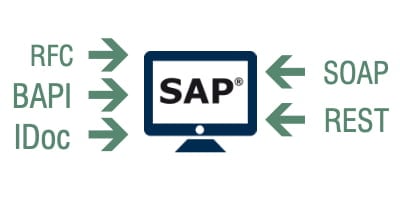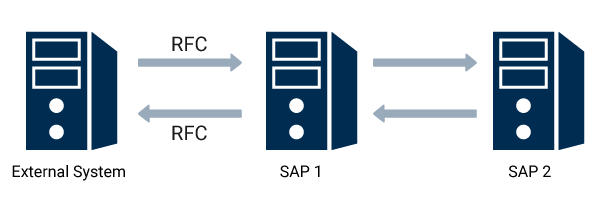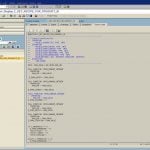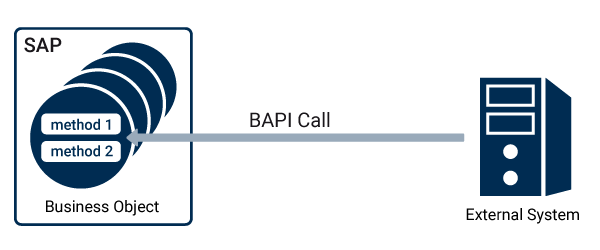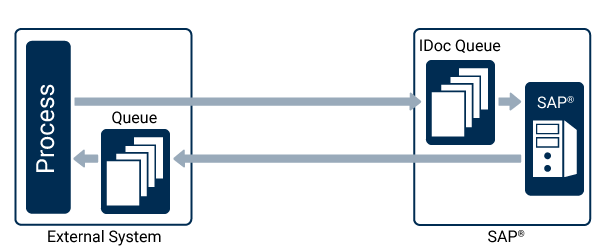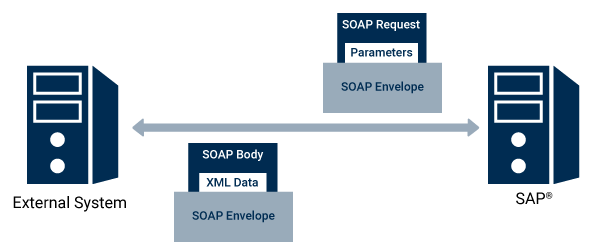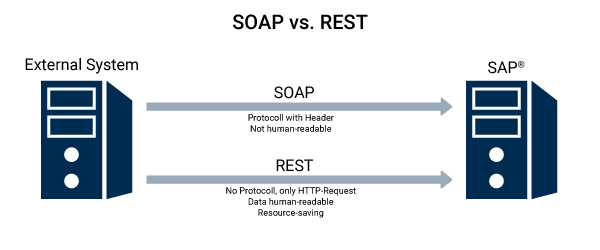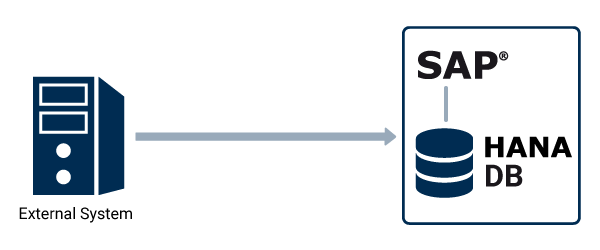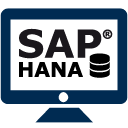How can external systems be integrated into SAP and which interfaces does the ERP system offer?
SAP standard interfaces offer possibilities to connect external systems to SAP. Last but not least, the digitalization of processes in companies requires integration of non-SAP systems. SAP interfaces allow any other software and other solutions to exchange data with the SAP system. Each available interface for exchange of data has advantages and disadvantages. Here we present the most important interfaces for integration, describe their basic functions and show in a video exemplary the coupling of an SAP system with an RFC interface. Discover everything you need to know about using SAP in our practical example and industrial explanations. You can find a dedicated video about this topic by visiting our tutorial stream.
RFC – Remote Function Call
The classic way for communication between non-SAP systems and SAP is, according to SAP itself, the RFC interface. RFC interfaces are also often used to communicate between SAP systems itself. Put simply, RFC is a remote function call. The RFC interfaces for integration have been available since SAP/R3 until today. With RFC, there is an RFC client and an RFC server, whereby the client calls a function on the server. The function is executed on the remote system. In an RFC coupling, both systems can act as server and client. The call of an RFC function is synchronous, so that it is especially suitable for processes in which decisions or data are directly required for production. The OPC Router can call RFC interfaces in the SAP system using all parameter types and data, but it can also be configured as an RFC server and serve as a call target.
What question do you have about the SAP interfaces?
BAPI – Business Application Programming Interface
The basic concept of BAPIs is object-orientation. BAPIs make the business objects available in the SAP system for access by external systems. Business objects represent real objects such as orders, customers or articles. The instances are accessed exclusively using methods provided by the business object. Technically the method is called on the basis of the RFC interfaces. The instance to which the calls are made is determined by key fields (customer number, and so on). The OPC Router connects BAPIs via SAP plug-in.
IDoc Messages
The IDoc (Intermediate Document) is an SAP file format. It is intended for transfer of transaction data. The structure of an IDoc is prescribed by the IDoc type and defines the exact length and position of fields in the file. The IDoc is divided into a header line, any number of data segments and status records. In contrast to the RFC interfaces, communication via IDocs is always asynchronous. The sender creates an IDoc with data according to the specification of the IDoc type and transfers it to the target system. The receiving system accepts the IDoc and inserts it into the processing buffer for IDocs, from which the documents are processed successively. IDocs are a very old and proven method of communication and are especially suitable for transferring master data and posting records. You can use the SAP plug-in to send IDocs from any source.
SOAP Webservice
SOAP web services are one of the newer technologies for connecting SAP. Since version 7.0 and the introduction of SAP NetWeaver, Web services have been standard for interfaces. SOAP is a pure web technology and functions are called using the HTTP protocol. RFC Functions are also made available via the SOAP interface. The client receives detailed information about the functions and their parameters via the WSDL file (Web Service Description Language). The WDSL file can be retrieved via a defined URL. Web services are created in SAP using WebDynpro and connected to ABAP programs and RFC interfaces. RFC functions can also be published as Web services using other solutions (such as SAP MII). The OPC Router can use SAP Web services with its SOAP plug-in.
REST API
For some years now, the SAP Gateway has had the functionality to provide ABAP functions and RFC interfaces in the form of a REST API. REST has some advantages over SOAP, but is similar in technology, since it is also a function call via HTTP protocol. Compared to SOAP, REST is easy to call from various platforms, transfers pure human-readable data in JSON or XML and is faster and saves resources. In the basic idea of REST, an object is accessed via REST, not its methods. The state of the object can be changed by the REST access. The change is caused by the passed parameters. A possible use case is the connection of the SAP PI via the REST interface.
What question do you have about the SAP interfaces?
SAP HANA
In 2013, SAP published the HANA platform and thus also the in-memory database of the SAP HANA platform. The access to the relational database is comparable to the access to other relational database systems whereby an SAP connection can be implemented as a pure database connection. If the SAP application to be interfaced uses jointly agreed tables and functions, the data exchange can take place via them. The SAP HANA database can be tested free of charge via SAP and with the SAP HANA Plug-in of OPC Router access can be easily established.
Connection of OPC with an RFC
In this video you can see an exemplary coupling of an SAP system with an RFC interface.
Simple SAP connection in practice with SAP interfaces
Connecting an SAP system to devices and machines in a system environment can be realized quite simply with the help of interfaces. With the RFC, BAPI, IDoc, SOAP and REST interfaces, various solutions are available for different requirements. Regardless of which interface is used, the result is the same: your SAP system communicates with your system environment.
For setting up the SAP connection, it is possible to use software such as OPC Router. All the key interfaces are provided, and the connections to devices and machines can be set up in a graphical user interface using drag & drop. In practice, it is possible to distribute SAP data to other systems or transfer data to the SAP system with little effort and no programming knowledge. Networking of this kind makes Industry 4.0 a reality.
Further information
Learn more about REST! What is REST? REST stands for “Representational State Transfers” and is a common protocol for exchanging data between software systems.
Read how our SAP HANA database plug-in enables you to exchange data of your production processes directly with the new SAP HANA database. Here you can find the details about the connection.
Learn more about the advantages of automated data exchange with the OPC Router at the adhesive label manufacturer HERMA. With direct PLC-to-ERP communication, pre-production, production, packaging and maintenance are digitally merged. 14 machines and 35 connections between PLC controllers and ERP-SAP are smartly coupled by the middleware.

